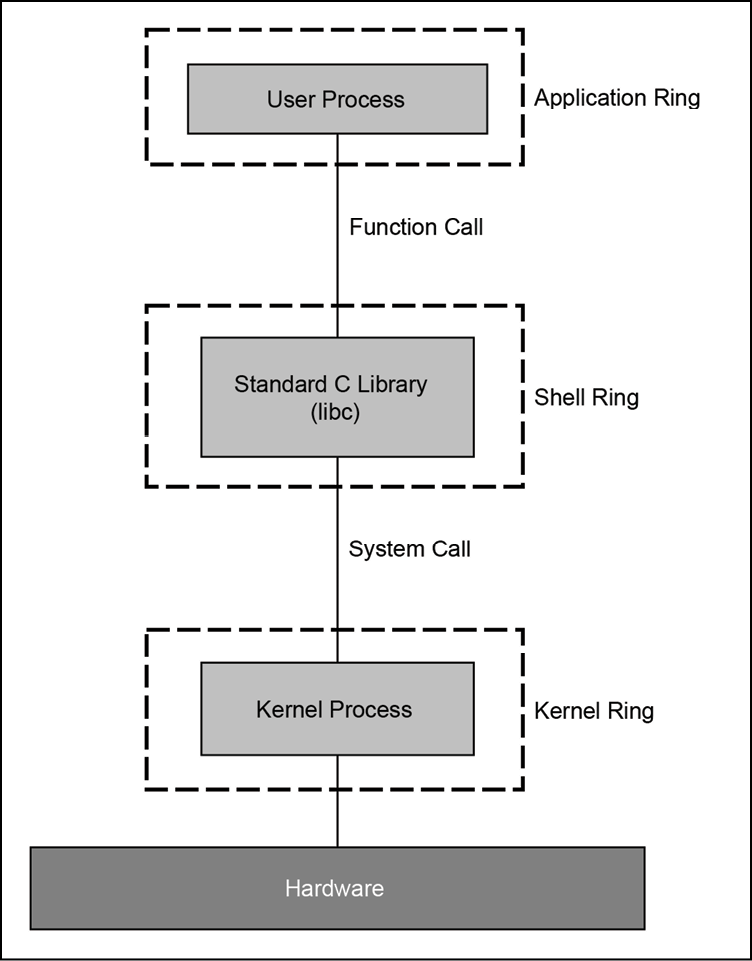-
Book Overview & Buying

-
Table Of Contents

Extreme C
By :

Extreme C
By:
Overview of this book
 Free Chapter
Free Chapter
 Sign In
Start Free Trial
Sign In
Start Free Trial

 Free Chapter
Free Chapter
The main purpose of the kernel ring is to manage the hardware attached to a system and expose its functionalities as system calls. The following diagram shows how a specific hardware functionality is exposed through different rings before a user application can finally use it:

Figure 10-4: Function calls and system calls made between various Unix rings in order to expose a hardware functionality
The preceding diagram shows a summary of what we have explained so far. In this section, we are going to focus on the kernel itself and see what the kernel is. A kernel is a process that, like any other processes that we know, executes a sequence of instructions. But a kernel process is fundamentally different from an ordinary process, which we know as a user process.
The following list compares a kernel process and a user process. Note that our comparison is biased to a monolithic kernel such as Linux. We will explain the different types of kernels in the next...
